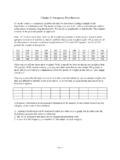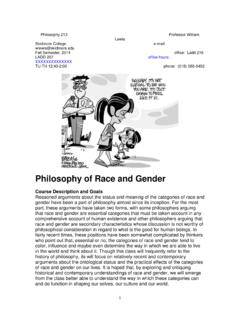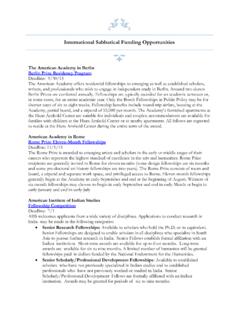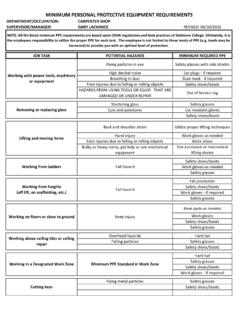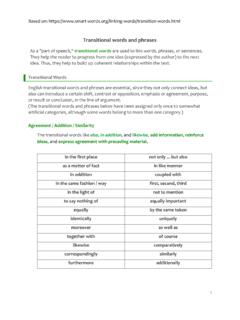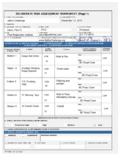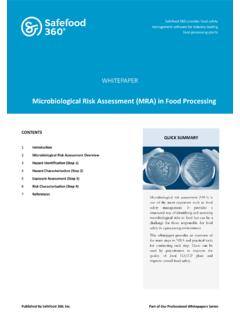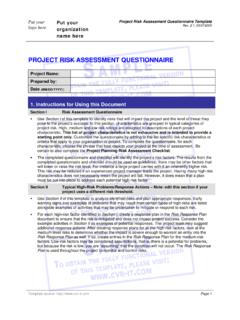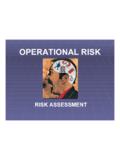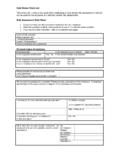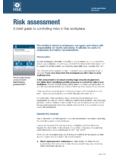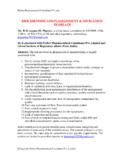Transcription of Affect, Risk, and Decision Making - Skidmore College
1 affect , Risk, and Decision MakingPaul Slovic and Ellen PetersDecision Research and University of OregonMelissa L. FinucaneKaiser Permanente HawaiiDonald G. MacGregorDecision Research and MacGregor-Bates, is perceived and acted on in 2 fundamental as feelingsrefers to individuals fast,instinctive, and intuitive reactions to as analysisbrings logic, reason, and scientificdeliberation to bear on risk management. Reliance on risk as feelings is described with the affectheuristic. The authors trace the development of this heuristic across a variety of research paths. Theauthors also discuss some of the important practical implications resulting from ways that this heuristicimpacts how people perceive and evaluate risk, and, more generally, how it influences all human decisionmaking.
2 Finally, some important implications of the affect heuristic for communication and decisionmaking pertaining to cancer prevention and treatment are briefly :risk perception, risk analysis, the affect heuristic, rationalityRisk in the modern world is perceived and acted on in twofundamental as feelingsrefers to individuals fast,instinctive, and intuitive reactions to as analysisbrings logic, reason, and scientific deliberation to bear on riskmanagement. In the present article, we examine what recent re-search in psychology and cognitive neuroscience reveals about riskas feelings and how it may influence judgments and decisions incancer prevention and and Theory: The Importance of AffectAlthough the visceral emotion of fear certainly plays a role inrisk as feelings, we focus here on a faint whisper of emotion calledaffect.
3 As used here, affect means the specific quality ofgoodness or badness (a) experienced as a feeling state (with orwithout consciousness) and (b) demarcating a positive or negativequality of a stimulus. Affective responses occur rapidly and auto-matically note how quickly you sense the feelings associatedwith the stimulus wordtreasureor the wordhate. We argue thatreliance on such feelings can be characterized as the affectheuristic, with the experienced feelings being used as informationin the Decision process. In this article, we trace the development ofthe affect heuristic across a variety of research paths followed byourselves and many others. We also discuss some of the importantpractical implications resulting from the ways that this heuristicimpacts how individuals perceive and evaluate risk and, moregenerally, how it influences all human Decision Making .
4 Finally,we briefly discuss some important implications for communicationand Decision Making pertaining to cancer prevention Modes of ThinkingAffect plays a central role in what have come to be known asdual-process theories of information processing(Cameron & Lev-enthal, 2003; Chaiken & Trope, 1999; Sloman, 1996). As Epstein(1994) observed,There is no dearth of evidence in every day life that people apprehendreality in two fundamentally different ways, one variously labeledintuitive, automatic, natural, nonverbal, narrative, and experiential,and the other analytical, deliberative, verbal, and rational. (p. 710)One of the main characteristics of the experiential system is itsaffective basis.
5 Although analysis is certainly important in somedecision- Making circumstances, reliance on affect and emotion isa quicker, easier, and more efficient way to navigate in a complex,uncertain, and sometimes dangerous world. Many theorists havegiven affect a direct and primary role in motivating are strong elements of rationality in both systems. It wasthe experiential system, after all, that enabled human beings tosurvive during their long period of evolution. Long before therewas probability theory, risk assessment, and Decision analysis,there were intuition, instinct, and gut feeling to tell people whetheran animal was safe to approach or the water was safe to drink.
6 Aslife became more complex and humans gained more control overtheir environment, analytic tools were invented to boost therationality of their experiential thinking. Subsequently, analyticthinking was placed on a pedestal and portrayed as the epitome ofrationality. affect and emotions were seen as interfering importance of affect , however, is being recognized increas-ingly by Decision researchers. A strong early proponent wasPaul Slovic and Ellen Peters, Decision Research, Eugene, Oregon andDepartment of Psychology, University of Oregon; Melissa L. Finucane,Kaiser Permanente Hawaii, Honolulu, Hawaii; and Donald G. MacGregor, Decision Research, Eugene, Oregon, and MacGregor-Bates, Inc.
7 , Eugene, concerning this article should be addressed to PaulSlovic, Decision Research, 1201 Oak Street, Suite 200, Eugene, OR : PsychologyCopyright 2005 by the American Psychological Association2005, Vol. 24, No. 4(Suppl.), S35 S400278-6133/05/$ DOI: (1980) who argued that affective reactions to stimuli areoften the very first reactions, occurring automatically and subse-quently guiding information processing and judgment. If Zajonc iscorrect, then affective reactions may serve as orienting mecha-nisms, helping individuals make decisions quickly and now recognize that the experiential mode of think-ing and the analytic mode of thinking are continually active.
8 Whilepeople may be able to do the right thing without analysis ( ,dodge a falling object), it is unlikely that they can use analyticthinking rationally without guidance from affect somewhere alongthe line. affect is essential to rational action (Damasio, 1994).The affect HeuristicThe feelings that become salient in a judgment or Decision - Making process depend on characteristics of the individual and thetask as well as the interaction between them. Individuals differ inthe way they react affectively and in their tendency to rely onexperiential thinking (Gasper & Clore, 1998; Peters & Slovic,2000). As shown in this article, tasks also differ regarding theevaluability (relative affective salience) of information.
9 Thesedifferences result in the affective qualities of a stimulus imagebeing mapped or interpreted in diverse ways. The salient qual-ities of real or imagined stimuli then evoke images (perceptual andsymbolic interpretations) that may be made up of both affectiveand instrumental of the images in people s minds are tagged or marked tovarying degrees with affect . An individual s affect pool containsall of the positive and negative markers associated (consciously orunconsciously) with the images. The intensity of the markersvaries with the consult or sense the affect pool in the process ofmaking judgments. Just as imaginability, memorability, and sim-ilarity serve as cues for probability judgments ( , the availabilityand representativeness heuristics; Kahneman, Slovic, & Tversky,1982), affect may serve as a cue for many important judgments(including probability judgments).
10 Using an overall, readily avail-able affective impression can be easier and more efficient thanweighing the pros and cons of various reasons or retrieving rele-vant examples from memory, especially when the required judg-ment or Decision is complex or mental resources are limited. Thischaracterization of a mental shortcut has led researchers to labelthe use of affect aheuristic(Finucane, Alhakami, Slovic, &Johnson, 2000).Empirical Support for the affect HeuristicSupport for the affect heuristic comes from a diverse set ofempirical studies, only a few of which are reviewed Research: Dread and Outrage in Risk PerceptionEvidence of risk as feelings was present (though not fullyappreciated) in early psychometric studies of risk perception(Fischhoff, Slovic, Lichtenstein, Read, & Combs, 1978; Slovic,1987).

